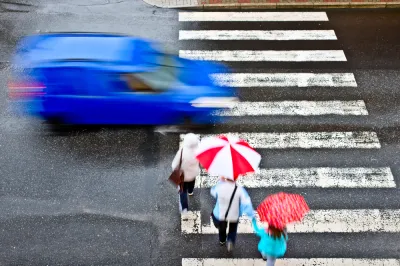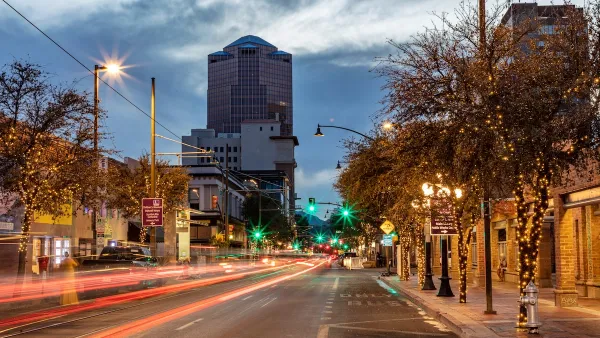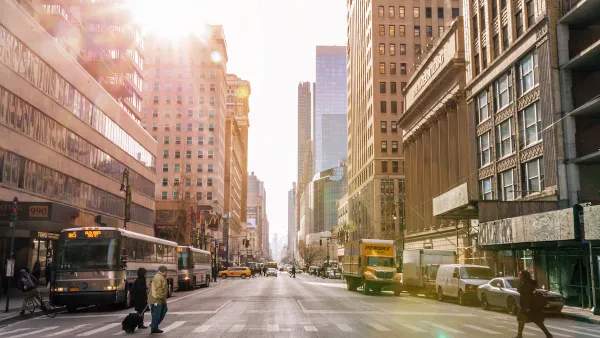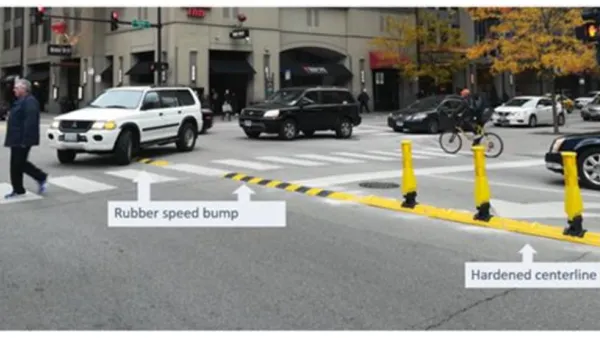Although Los Angeles isn't famous for its walking culture, many neighborhoods are actually quite suited for it. That is, if streets could be made friendlier to the pedestrians they currently repel.

In an op-ed for the Los Angeles Times, Max Podemski argues that good crosswalks are the vital and inexpensive missing ingredient that could spur walkability in the city.
Contrary to the belief that Los Angeles is a city of suburbs, Podemski writes, "These streets have 'good bones.' They go through vibrant commercial districts and high-density neighborhoods. Even Pacoima, an area thought of as a distant suburb by many Angelenos, has a population density of more than 10,000 people per square mile, higher than most neighborhoods in Portland."
Designed, in some areas, around a vanished streetcar network, Los Angeles streets now favor auto travel. "Is there anything more frustrating for a pedestrian than arriving at a corner without white lines? You have to choose between risking your life by darting across the street and walking out of your way in the hope of finding a safe crossing nearby."
Painting better crosswalks doesn't cost much, and acts as a basic overture to pedestrians—one that can be built upon. "Many of the mayor's walkability proposals involve improving discrete areas. [...] But to achieve the goal of walkability, the mayor should also consider basic infrastructure upgrades across the city."
FULL STORY: Want people to walk in L.A.? Then we need more crosswalks

National Parks Layoffs Will Cause Communities to Lose Billions
Thousands of essential park workers were laid off this week, just before the busy spring break season.

Retro-silient?: America’s First “Eco-burb,” The Woodlands Turns 50
A master-planned community north of Houston offers lessons on green infrastructure and resilient design, but falls short of its founder’s lofty affordability and walkability goals.

Delivering for America Plan Will Downgrade Mail Service in at Least 49.5 Percent of Zip Codes
Republican and Democrat lawmakers criticize the plan for its disproportionate negative impact on rural communities.

Test News Post 1
This is a summary

Test News Headline 46
Test for the image on the front page.

Balancing Bombs and Butterflies: How the National Guard Protects a Rare Species
The National Guard at Fort Indiantown Gap uses GIS technology and land management strategies to balance military training with conservation efforts, ensuring the survival of the rare eastern regal fritillary butterfly.
Urban Design for Planners 1: Software Tools
This six-course series explores essential urban design concepts using open source software and equips planners with the tools they need to participate fully in the urban design process.
Planning for Universal Design
Learn the tools for implementing Universal Design in planning regulations.
EMC Planning Group, Inc.
Planetizen
Planetizen
Mpact (formerly Rail~Volution)
Great Falls Development Authority, Inc.
HUDs Office of Policy Development and Research
NYU Wagner Graduate School of Public Service





























